The magazine summarised its list as “an assessment of authenticity and stewardship, an evaluation of the qualities that make a destination unique, and a measurement of “integrity of place.”
It marked out six core criteria - “environmental and ecological quality; social and cultural integrity; condition of historic buildings and archaeological sites; aesthetic appeal; quality of tourism management; and outlook for the future.” They sound like pretty laudable measures to be running across all tourism destinations - not just beaches.
Vietnam’s two most popular beach destinations were in good company at the bottom alongside international beach icons Goa, the Algarve, Waikiki and others. What is disappointing about Vietnam's low ranking is how a relative new comer to beach travel could already have done so much damage. One could also question why Vietnam has not taken advantage of the lessons of other more established destinations in making better decisions about its coastal development.
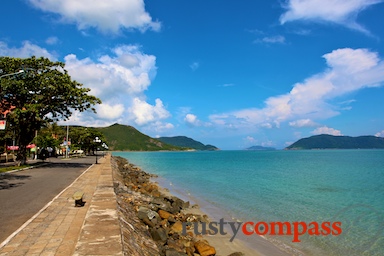
Photo: Mark BowyerCon Dao Island's wonderfully serene main promenade
Vietnam’s first 15 years in the global tourism spotlight have been a great success by many measures. Visitor growth has been strong and satisfaction levels high. But the elements that have underwritten these early years on the global tourism stage are being fundamentally changed. The country's reputation for “authenticity” and its undiscovered mystique are inevitably passing. The question now is how the destination will be defined in the coming decade and how it will survive the current official culture of overdevelopment.
Two other major Vietnam travel destinations, Halong Bay and the former royal capital Hue - both World Heritage sites - would also score very poorly against the same measures applied to Nha Trang and Mui Ne by National Geographic Traveller.
Vietnam’s other World Heritage sites, the merchant town of Hoi An and the Cham ruins at My Son have held up better so far.
Few countries escape the blight of excessive coastal development. But lessons have been learned and they’re not just the lessons of quixotic environmentalists. They’re commercial lessons. Travellers like well planned and environmentally enlightened development. They like clean beaches and access to natural landscapes. They like small boutique style hotels and resorts with gardens and tasteful low rise structures. They like cycling, walking and swimming. They like breathing clean air. They like meaningful interaction with a country's history and culture.
It’s true that many travellers also like casinos, golf courses and towering resort developments. But destinations that throw their lot in with this type of development are in a race to the bottom with other destinations. These developments have little or no intrinsically local character and very often damage the very charms that give a destination unique appeal. It's ironic that in modern communist Vietnam, the casino, golfing, mega-resort crowd are winning the development argument hands down.
Perhaps it’s better to think beyond Mui Ne, Nha Trang and Danang. Their main beach strips are probably lost causes. There may even be value in making these places centres of crass mass tourism and overdevelopment so that other areas can be developed more carefully and more sustainably.
Vietnam still has loads of stunning coastline and the hope now is that the lessons of Nha Trang and Mui Ne will be learned such that development in other pristine parts of the country will be more sustainable.
Based on recent travels, we’d like to mark out four places in Vietnam on the verge of major development that we hope will still retain their magic in another decade from now - perhaps even getting top ratings in National Geographic Travellers' 2020 survey! Of course they will and should develop and change - the question is how? They certainly have all the right elements at present for visionary, sustainable development.
Phu Quoc Island
Phu Quoc Island’s stunning beauty, pristine forest and low population has made it one of Vietnam’s most popular beach spots during the past decade. The white sands of Long Beach are now crowded with hotels and other parts of the island are also opening up to developers. But Phu Quoc Island is still a great place to visit.
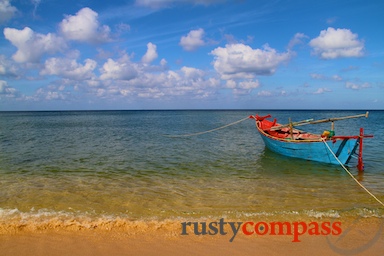
Photo: Mark BowyerPhu Quoc Island
While many of Phu Quoc’s hotels are disappointing aesthetically, most are small and don’t scar the natural landscape. There have been some innovative small developments as well. The spartan Bo Resort and Mango Bay are endearing in their raw simplicity.
The two larger scale developments on the island to date, La Veranda and Chen La resorts are both attractive and don’t impose too heavily on their respective locations.
But Phu Quoc is at a turning point. There are big plans for huge developments. And if coastal development elsewhere in Vietnam is any indication, it’s likely to be totally incongruous with the beautiful setting.
Con Dao Island
Con Dao is much smaller than Phu Quoc. And while it’s every bit as beautiful, it has important heritage value as well as exquisite natural features.
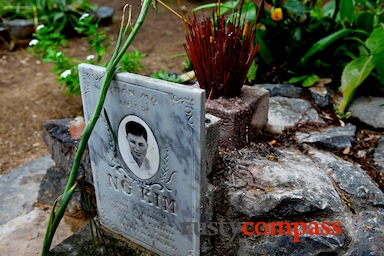
Photo: Mark BowyerCon Dao Island has both stunning landscapes and a chilling history
Con Dao was a French colonial prison in the 19th and 20th centuries and many of Vietnam’s most celebrated revolutionary leaders were held here. Thousands of nationalist and communist fighters died on the island as result of the prison's atrocious conditions and barbarity.
Many of the prison buildings are still standing creating a powerful and macabre historical monument.
Remarkably, the first major hotel development on Con Dao, Saigon Con Dao Resort, was permitted to overshadow and overwhelm the main prison complex - a place that once held former post war Vietnamese presidents, prime ministers and other luminaries. The approval of this development - at a de-facto shrine to some of the country’s most revered national heroes - does not bode well for other heritage and environmental assets on the island.
But it’s not too late. There’s been very little development here so far. And in addition to its fascinating, if chilling, colonial heritage, Con Dao is also home to a quaint small town, spectacular coastal views, diving and Vietnam’s most important sea turtle breeding grounds. Its quiet coastal roads are great for cycling too.
Cham Island
Cham Island off the coast from Hoi An is already a popular spot for divers and snorkellers. And like Vietnam’s other coastal gems, the rumours are flying of plans for large unsightly developments. It's another place that will inevitably be developed - so let’s hope there’s some restraint when the day comes. One senses it’s not far off.
An Bang Beach
The tourism development experience in Hoi An may not have been perfect, but so far it’s Vietnam’s best. Its popularity with travellers continues to soar. The preservation of the old town under UNESCO supervision has given Hoi An an enduring charm.
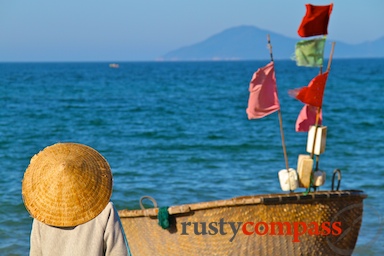
Photo: Mark BowyerAn Bang Beach, near Hoi An
An Bang beach about 20 minutes by bicycle from Hoi An town is a little piece of paradise in summer that is also worth holding on to. Nearby Cua Dai and much of the surrounding beach area has already fallen prey to large hotel developments. Just as preservation has allowed Hoi An's old town to prosper, so some of the nearby coastal terrain also needs to be set aside for common use.
The dilemmas facing Vietnam’s beaches are the same dilemmas facing tourism to Vietnam overall. The first is the assumption that large is always better. While Cambodia is benefitting from a flourishing boutique hotel industry - each one raising the bar in design, landscaping and facilities for the next development - Vietnam seems to only value huge and normally unappealing developments. There is no boutique hotel scene of any note in Vietnam.
Then there are the secondary issues - approaches to preservation, the disneyfication of historic sites, pollution and environmental degradation and the virtual absence of any serious historical and cultural information at major sites.
Vietnam and all travel destinations would do well to continually appraise tourism development against the 6 criteria listed by National Geographic Traveller. If they do, the four beach destinations nominated here - Con Dao, Phu Quoc, Cham Island and An Bang beach, will all be places to return to for locals and international visitors in the decades ahead. They will also remain viable long term economic and environmental assets.

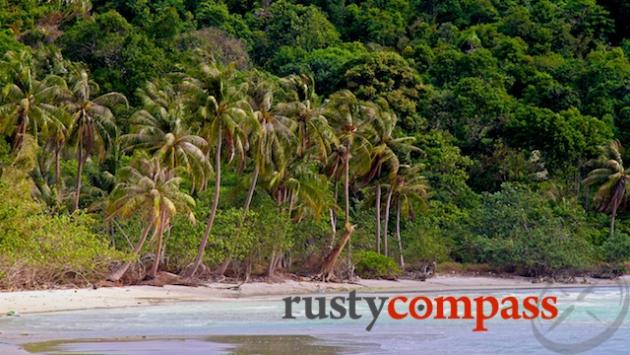



There are no comments yet.